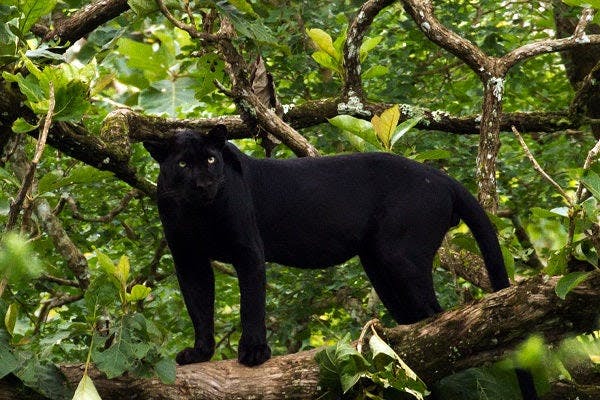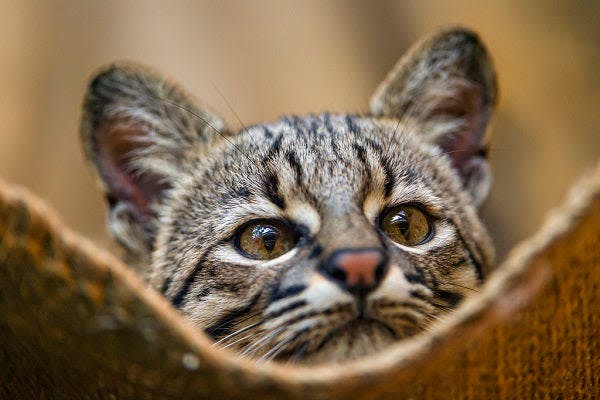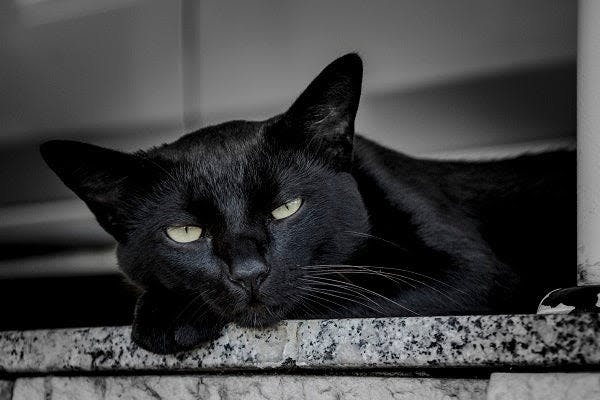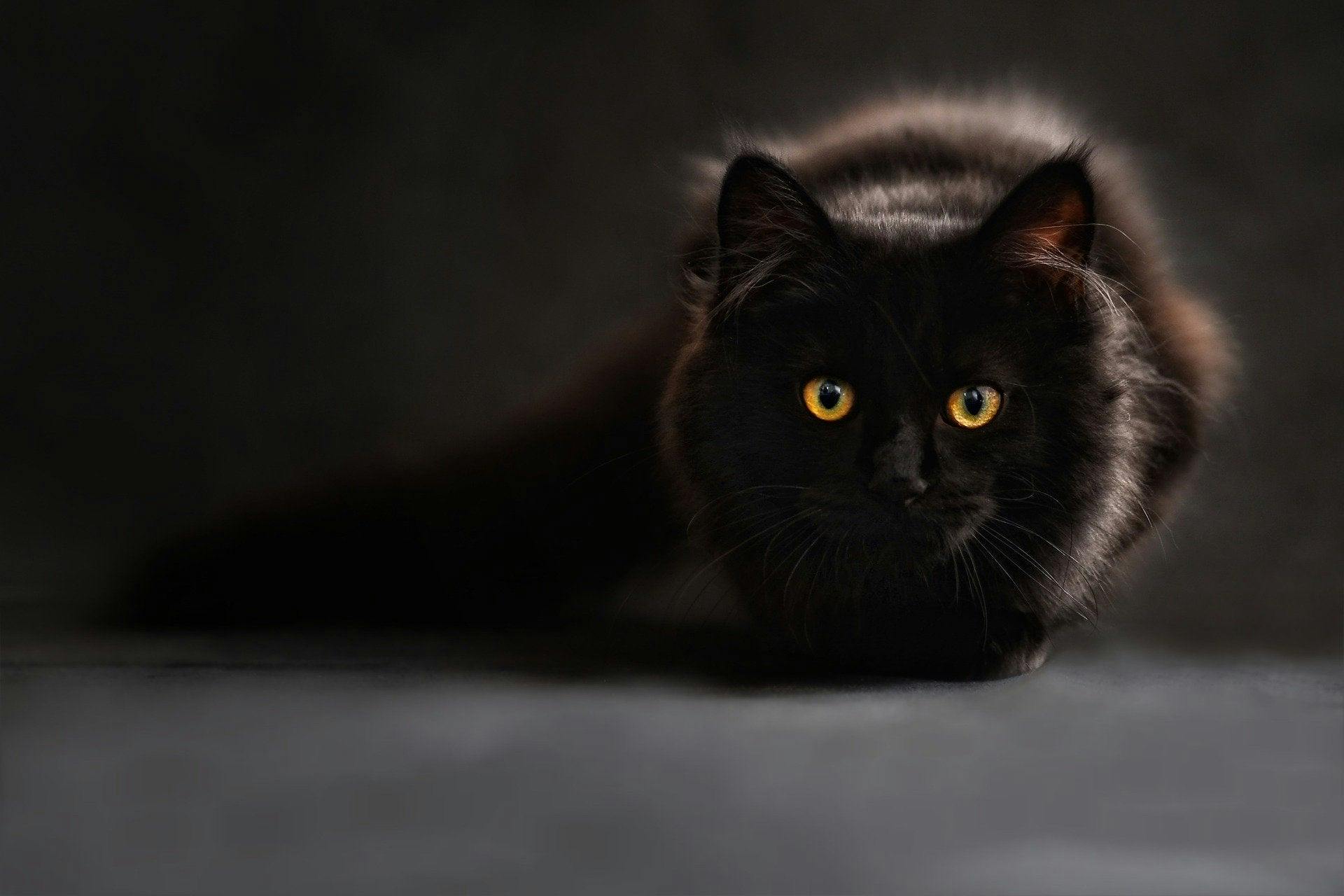Melanism (dark coat coloration) is a common polymorphism observed in many animals. This remarkable feature has been described in as many as 13 (out of 37) felid species (Schneider et al, 2015). It is still widely speculated why exactly feline melanism evolved in the first place and what kind of adaptive and evolutionary significance it has for our favorite furriends.
A study by Eizirik et al. (2003) explains that there must be at least four independent genetic origins for melanism in the cat family. This recurrent evolution of the trait and its preservation in the feline population indicate its potential adaptive importance and raises a question: does melanism have an evolutionary advantage for cats? A study by Schneider et al. (2015) supports the claim by demonstrating that "some “black cats” are black not by chance, but by selection for a mutation that provides increased fitness".
The evolution of feline melanism
We know that solid coloration in domestic cats is determined by a recessive allele (ASIP-∆2) of the agouti signaling protein gene (ASIP) (this allele is often referred to as non-agouti). Only recessive homozygotes for this gene will result in solid coloration. The coloration itself is influenced by other genes involved in the formation of coat color. Black coloration is the product of a dominant allele B of the feline primary gene for coat color (B/b/b1). Eizirik et al. (2003) mapped, cloned and sequenced the ASIP gene to characterize the mutation coding for melanism in domestic cats. Furthermore, they also analyzed another gene called melanocortin 1 receptor (MC1R), which is associated with dark coloration in wild cats (jaguars and jaguarundis). They found two independent deletions associated with melanism in jaguars and jaguarundis.

Jaguar
The ASIP gene was mapped to chromosome A3, and MC1R was mapped to chromosome E2. Their positions in the feline genome correspond to the position of homologous genes, or genes in two different species inherited from a common ancestor, in the human genome. The mutation in the ASIP gene associated with black coloration of domestic cats results the ASIP-∆2 allele. The study emphasizes that this mutation actually causes complete loss of the gene's function, and it results in a dysfunctional protein. This loss-of-function is, therefore, what leads to melanism in domestic cats. It was also discovered that this trait is inherited recessively. All the studied black cats were homozygotes for the allele, while all the non-black studied cats had at least one wild-type allele. This allele was not found among the studied wildcats.
In jaguars, an allele of the MC1R gene, MC1R-∆15, was associated with black coloration and was found to be inherited dominantly. All black jaguars had at least one copy of the MC1R-∆15 sequence. A second allele of this gene, MC1R-∆24, was also identified and associated with black coloration in jaguarundis. This mutation arose independently from MC1R-∆15, and it was found to be semi-dominant. Interestingly, none of these three mutations mentioned in this study are associated with melanism in other felid species. This lead to a conclusion that there could be at least 4 independent origins of the trait. Mutations in MC1R gene, however, result in a gain of function and lead to melanism (Eizirik et al, 2003).
A study by Schneider and her colleagues (2015) examined three closely-related Leopardus cats (pampas cat, kodkod and Geoffroy's cat) and found similar mutations. "In both the pampas cat and the kodkod, mutations in ASIP were identified that are predicted to cause a loss-of-function, and homozygosity for these mutations was completely associated with melanism. […] In Geoffroy’s cat, we identified an MC1R mutation as the likely cause of melanism." - Schneider et al. in "Recurrent Evolution of Melanism in South American Felids" (2015).

Geoffroy’s cat
Evolutionary significance of feline melanism
The results of the studies described above lead to two inevitable questions. Why did this trait evolve multiple times through feline history? Does it serve an adaptive purpose? While it can be speculated that this is an adaptation to nocturnal lifestyle by different cat species, scientists now believe that melanism could also provide a more significant contribution to feline survival. For example, the identified mutations are actually found in the same family of genes as those involved in the human response to human diseases (such as response to HIV). This indicates that there is a possibility of black cats carrying resistance to certain diseases. Eduardo Eizirik, an evolutionary geneticist at the US National Cancer Institute in Maryland, told the NewScientist: “There are parallels with humans. [The gene mutation system found] does have parallels with other systems potentially involved in disease.”

Before we can be certain about the evolutionary and adaptive significance of coat coloration of cats, there is still a lot more we must learn about the evolution of feline melanism and the natural selection that has shaped the feline color variation to what it is today. The data available for now emphasizes the important role of melanism, and further research extending the studies to other species may reveal even more information. Learning more about the magnificent felines dressed in black could lead to key scientific discoveries for humans, too.
Sources and further reading:
1. Eizirik E, Yuhki N, Johnson WE, Menotty-Raymond M, Hannah SS, O'Brien SJ (2003). Molecular Genetics and Evolution of Melanism in the Cat Family. Current Biology 13: 448-453. 2. Schneider A, Henegar C, Day K, Absher D, et al (2015). Recurrent Evolution of Melanism in South American Felids. PLOS Genetics 11(4): e1005126
